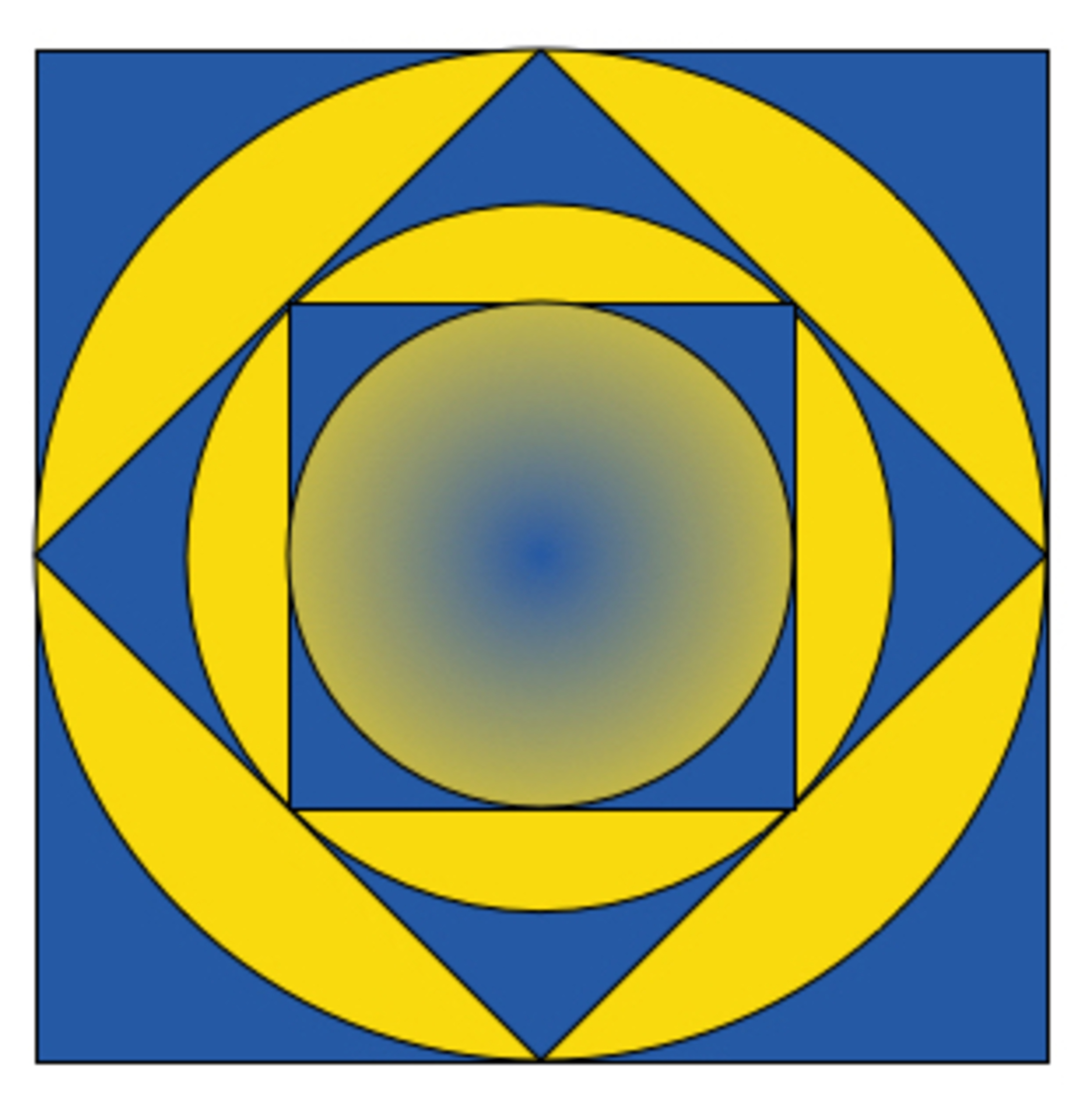Square And Circle And Square And Circle

Consider a sequence of squares and circles that are inscribed within each other to infinity. The squares are colored blue, and the circles are colored yellow.
Which area would be larger?
This section requires Javascript.
You are seeing this because something didn't load right. We suggest you, (a) try
refreshing the page, (b) enabling javascript if it is disabled on your browser and,
finally, (c)
loading the
non-javascript version of this page
. We're sorry about the hassle.
Let a square's side length be x . Then, the first inscribed circle within it has radius x / 2 . Then, the blue area between the first square and the first circle is given by x 2 − π ( 2 x ) 2 = x 2 ( 1 − π / 4 ) . Furthermore, the next square inscribed within this first circle has side length x / 2 , and the circle within this square has radius x / ( 2 2 ) , so the area between the second square and the second circle is ( x / 2 ) 2 − π ( x / ( 2 2 ) ) 2 = 2 1 x 2 ( 1 − π / 4 ) , precisely half the area from the square before. Thus, we have a convergent geometric series; taking the initial square to have side length s , we see that the entire blue area is equal to: s 2 ( 1 − 4 π ) i = 0 ∑ ∞ ( 2 1 ) i = 2 s 2 ( 1 − 4 π ) using the fact that ∑ i = 0 ∞ ( 2 1 ) i = 1 − 2 1 1 = 2 .
A similar pattern occurs in the yellow areas. Let the radius of a circle be r . The area between this circle and the first square inscribed in it (which side length r 2 ) is π r 2 − ( r 2 ) 2 = r 2 ( π − 2 ) . Then, the next circle has radius r / 2 , and the square within it has side length r 2 / 2 = r , so the area between these is π ( r / 2 ) 2 − r 2 = 2 1 ( r 2 ( π − 2 ) ) , so again we have a geometric series where each successive term is half the previous. Taking the first circle to have radius s / 2 (since the first square has side length s ), the yellow area is equal to: s 2 ( 4 π − 2 1 ) i = 0 ∑ ∞ ( 2 1 ) i = 2 s 2 ( 4 π − 2 1 )
Thus, which area is larger comes down to which of 1 − 4 π and 4 π − 2 1 is larger. A little work by hand reveals that it is the latter, so it is the yellow area which is larger.